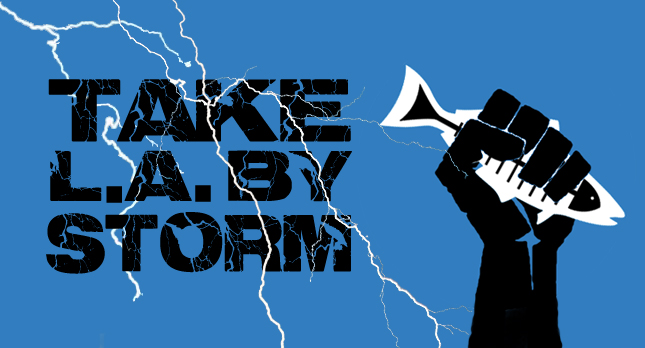Tune in to the British Broadcasting Corporation’s Lonely Planet “California Adventure” special at 10 a.m. Sunday to tour Heal the Bay’s Santa Monica Pier Aquarium with the popular travel show’s host, Dominic Bonnuccelli.
Maria Calleia, who works in program development for Lonely Planet Television, requested permission to film at the Aquarium a few months ago. She said the show was eager to feature Heal The Bay and our Aquarium in an upcoming special, ‘Subaru California Eco Adventure.’ Host Bonnuccelli travels to locations up and down the California Coast – in…no surprise, a Subaru – to experience eco-oriented adventures and visit organizations active in conservation and preservation.
Calleia, an L.A. native, said she selected Heal the Bay to represent Southern California’s environmental community because of the enormity of our efforts, the organization’s credibility and our lengthy track record of making the region’s coastal waters and watersheds safe, healthy and clean. More than 100 species of marine animals and plants call the Aquarium home, including Pacific sea horses, sea stars and swell sharks.
Along with the segment on the Aquarium and Heal the Bay, featured are the 31st Annual Avalon Harbor Cleanup, a visit to the Santa Barbara Marine Mammal Center and an interview with Sara Bayles, founder of a cleanup effort to pick up trash on the beach around Santa Monica lifeguard tower 26 for 365 non-consecutive days. Sara blogs about her experiences at The Daily Ocean.
Watch BBC America on Sundaymorning to see how our Aquarium shines as the public face of Heal the Bay. Check your local listings, but Time Warner Cable station 131 will air the show from 10-11 a.m.
Tour our Aquarium for yourself. Plan your visit.



